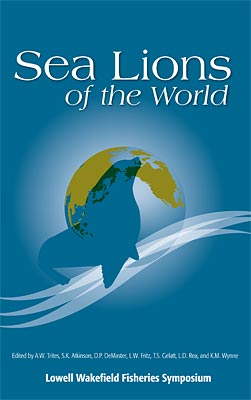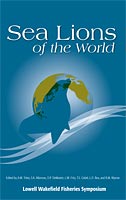
Population status and trends of the California sea lion (Zalophus californianus californianus) in the Gulf of California, Mexico
D. Szteren, D. Aurioles, and L.R. Gerber
- Price: $1.60 Sale: $0.00
 This is part of Sea Lions of the World
This is part of Sea Lions of the World| Format | Price | |
|---|---|---|
| PDF download [296 KB] Bypass cart and download |
Free | Add to Cart |
Description
California sea lions breed along the Pacific Coast of the United States, south to Baja California, Mexico, and throughout the Gulf of California. Although the population in the United States has been increasing over the last 15 years, the status of the population in the Gulf of California is unknown. The last published census in 1994 yielded an estimate of 31,393 animals, but some rookeries have subsequently declined in abundance. The aim of this study is to provide a new estimate of population size for California sea lions in the Gulf of California and to examine the relative risk of extinction among thirteen sites using census data from 1970-2004. Our initial population estimate for 2004 is 17,484 including 4,299 pups, and the total number of sea lions when correction factors were applied was between 24,062 and 31,159. Four of the thirteen rookeries exhibited increasing trends: the two northernmost islands (Consag and San Jorge), the southernmost island (Los Islotes), and San Esteban in the Central Gulf. The remaining rookeries were either stable or declining in abundance. In our analysis of total population and pup production trends, we identified a group of sea lion rookeries that are growing in total numbers and pup production, and exhibit low probability of extinction. Another group shows total abundances decreasing, pup production declining, negative population growth, and a high probability of extinction. Finally, a third group of rookeries exhibit high fluctuations in abundance and no clear population trend. Rookeries with maximum probability of extinction and declining trends are situated at or near Angel de la Guarda Island (Central Gulf). We discuss several possible causes of these declines, including the influence of sardine in the diet of sea lions.
Item details
- Item number: AK-SG-06-01y
- Year: 2006
- DOI: https://doi.org/10.4027/slw.2006.25



